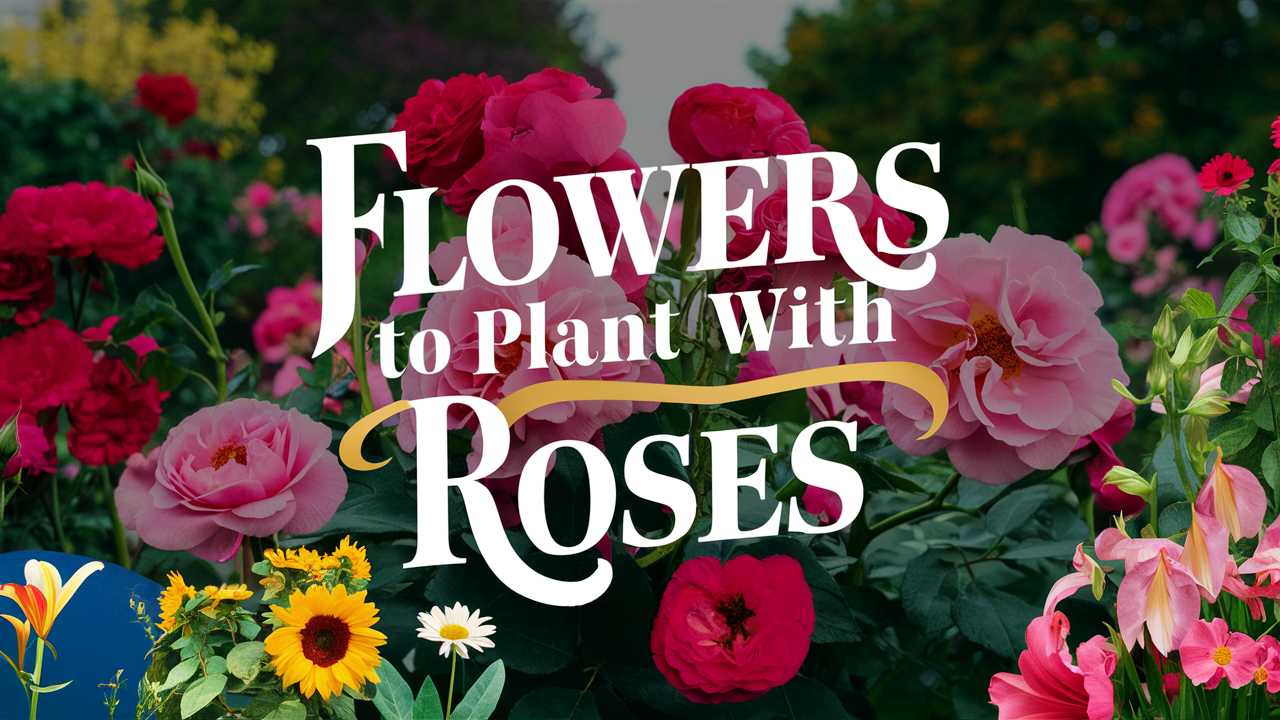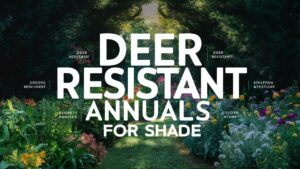In this guide, we will explore a variety of flowers that not only complement roses aesthetically but also help in creating a thriving garden ecosystem. Let’s dive in!
Agastache
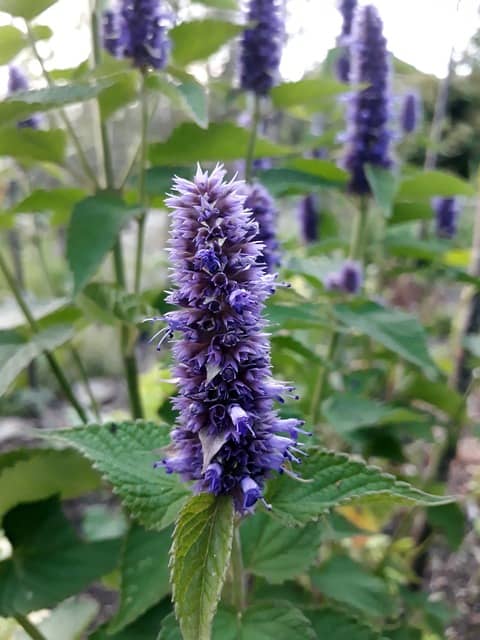
Agastache, commonly known as hyssop or hummingbird mint, makes an excellent companion for roses. Its tall, spiky flowers come in vibrant shades of purple, blue, and orange, offering a striking contrast against the lush greenery of rose bushes. More than just visual beauty, Agastache attracts pollinators like bees and hummingbirds, promoting biodiversity within your garden. Additionally, it thrives in similar well-draining soil conditions and sunny locations, making it a perfect match for most rose varieties. Its fragrant foliage can also help mask any unpleasant odors that may arise from specific rose types.
Coreopsis
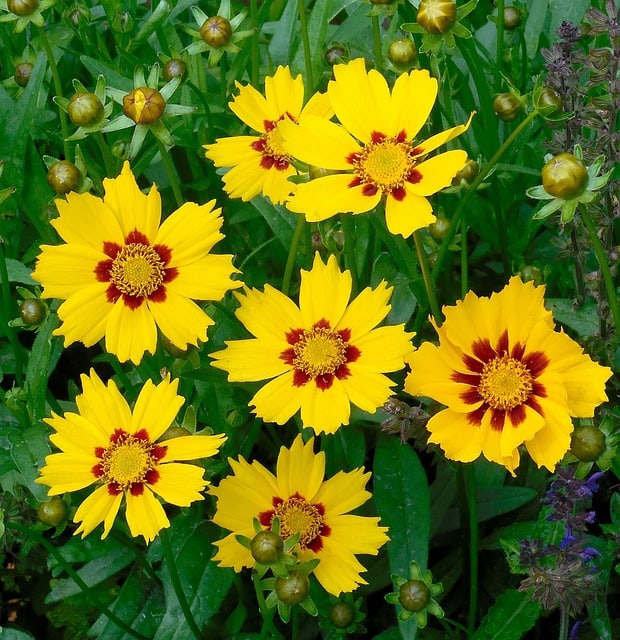
Coreopsis, or tickseed, brings a cheerful pop of color to your rose garden. With their bright yellow, gold, or red blooms, these hardy perennials bloom profusely and can create a delightful visual rhythm when planted alongside roses. They are drought-tolerant and require minimal care, making them an ideal choice for gardeners seeking low-maintenance companions. Moreover, Coreopsis has a long blooming season, which means it can provide a stunning backdrop for your roses throughout the summer months. The combination of roses’ lush form and the dainty texture of Coreopsis creates a balanced and vibrant garden aesthetic.
Alliums
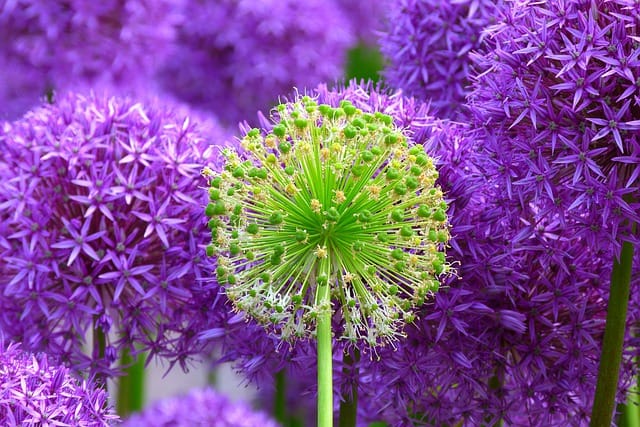
Alliums, or ornamental onions, introduce a unique architectural element to a rose garden. Known for their spherical blooms that tower above other plants, Alliums bloom in shades of white, purple, and blue and can create a striking visual contrast with the softer textures of rose petals. These perennials repel certain pests, thus benefiting nearby roses. Additionally, Alliums bloom later in the spring and early summer, which allows for a staggered blooming period in your garden. This intersection of bloom times keeps the visual interest alive for longer, and their dried flower heads can also add winter beauty.
Yarrow
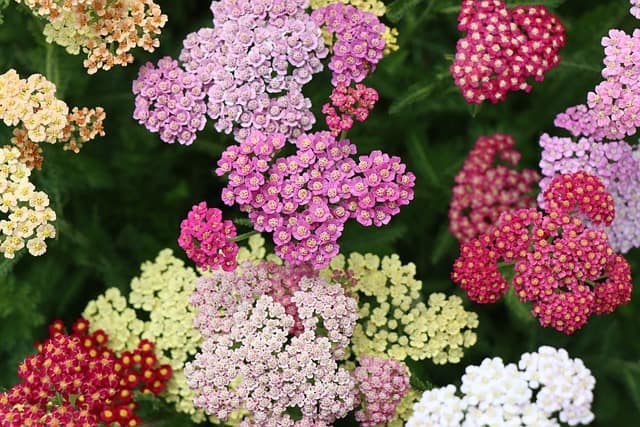
Yarrow (Achillea), with its flat-topped clusters of tiny flowers, is not just pretty but also highly beneficial for gardens featuring roses. Thriving in areas with full sun and well-drained soil, Yarrow attracts beneficial insects while its foliage releases a pleasant herbal fragrance. This drought-resistant perennial is relatively low-maintenance and can be pruned to manage its height. When planted near roses, it provides a lush green backdrop that enhances the visual appeal, ensuring that the beauty of your roses truly stands out. Moreover, its stronger stems can support nearby fragile blooms, creating a balanced and harmonious look.
Marigolds
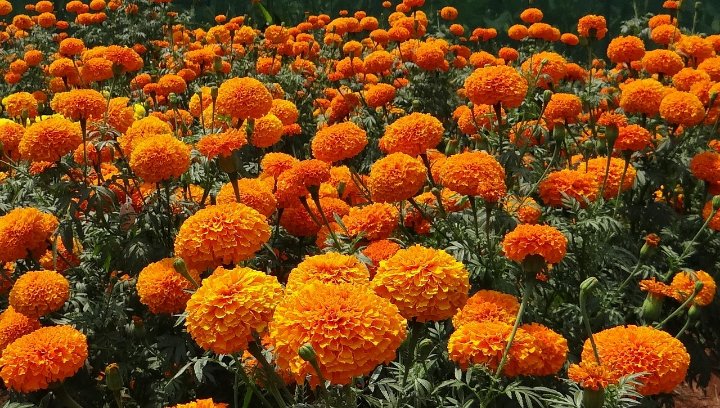
Marigolds offer a splash of vibrant color and a wealth of benefits for rose gardens. These cheerful annuals are not only beautiful but act as natural pest deterrents, particularly against nematodes, aphids, and whiteflies. Their strong scent is believed to mask the roses’ fragrance, preventing pests from zeroing in on them. They thrive in sunny locations and can be planted as borders or sprinkled throughout the rose garden for pops of color. Moreover, Marigolds’ contrasting yellow and orange hues can create a striking palette alongside the various shades of roses, enlivening your garden space while serving as guardians for your treasured blooms.
Larkspur
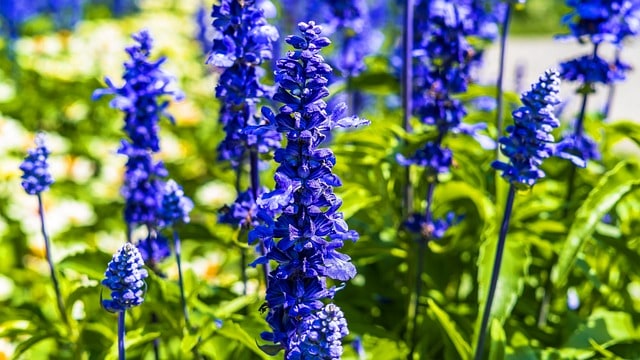
Larkspur, with its tall spikes of blue, purple, and white flowers, provides a lovely vertical accent to a rose garden. Their elegant, feathery petals add a soft contrast to the lush blooms of roses, creating a beautiful layered look. These biennials can reach considerable heights, which draws the eye upward, allowing the roses to flaunt their beauty at the lower levels. Larkspur can also attract butterflies, adding another layer of movement and life to your garden ecosystem. However, it’s essential to note that while Larkspur is attractive, its seeds are toxic if consumed – thus its placement should be carefully considered if pets or children are present.
Bee Balm
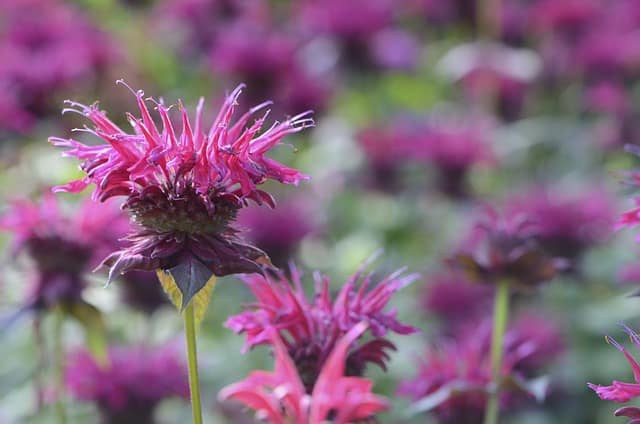
Bee Balm (Monarda) is an excellent companion for roses, and its aromatic foliage deeply appeals to both humans and pollinators alike. The spectacular blooms of Bee Balm—ranging from red to pink to purple—make a stunning pairing with the classic elegance of roses. This perennial not only draws bees, butterflies, and hummingbirds but also contributes to the overall health of your garden by attracting beneficial insects. Bee Balm prefers similar growing conditions as roses, making them easy to combine in the same bed. Additionally, its medicinal properties have long been celebrated in herbal medicine, adding an extra layer of value to this beautiful flower.
Astrantia

With its unique, star-like flowers and structured layers of bracts, Astrantia creates a magical and unusual backdrop to garden roses. Its delicate blooms in shades of white, pink, or red complement the varied colors found in rose varieties while adding an intriguing texture to your floral arrangement. Astrantia flourishes in partial shade and prefers consistently moist soil, which may contrast with some rose varieties but can work beautifully in rose gardens that experience some shade during the day. This lovely flower also attracts butterflies and supports pollinator populations, making it a smart choice for any dynamic floral ecosystem.
Sedum
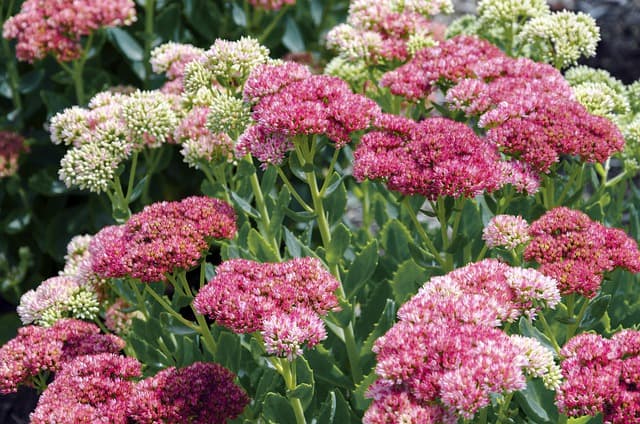
Sedum, or stonecrop, serves as a fantastic ground cover that complements roses beautifully. The diverse varieties of Sedum display various forms and colors, from vibrant green to stunning reddish hues, adding year-round interest to your garden. Their succulent leaves help to retain moisture in the soil while requiring little care, making them ideal companions for roses. Moreover, Sedums bloom in late summer and fall, providing late-season color that contrasts beautifully with your earlier-flowering roses. When interplanted, they can help control weeds and provide a visual cushion that allows the roses to take center stage.
Salvia
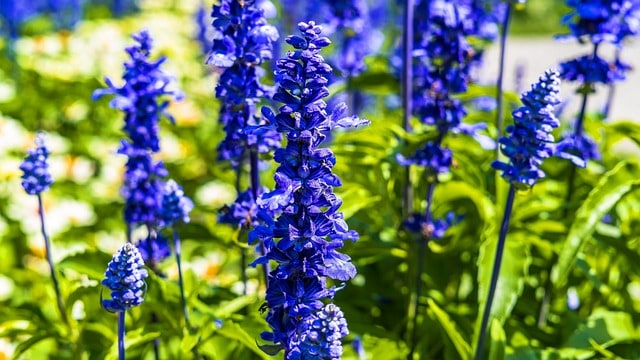
Salvia, or sage, is a genus that includes a variety of colorful, hardy perennials ideal for rose gardens. Offering shades of blue, purple, and red, Salvia’s spiky blooms create height and texture, balancing the more rounded forms of rose bushes. Additionally, this plant thrives in sunny environments and well-drained soil, aligning well with rose care requirements. Salvia attracts pollinators, especially bees and hummingbirds, fostering a vibrant and flourishing garden ecosystem. Its long blooming period ensures that the garden remains lively and captivating from late spring to fall.
Nasturtiums
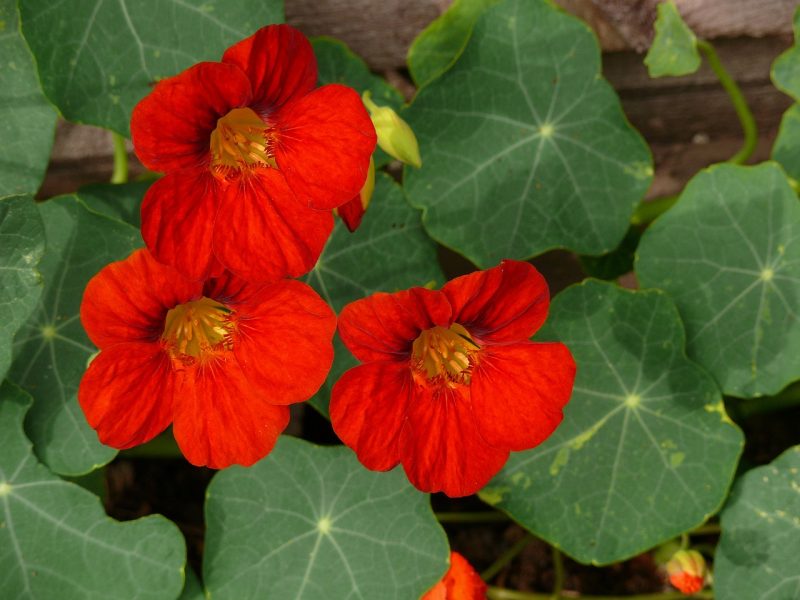
Nasturtiums are delightful annuals that offer a vibrant splash of color alongside roses. With their edible flowers—ranging from bright orange to deep red—and circular leaves, they add a whimsical touch to any garden. Beyond their beauty, Nasturtiums act as a natural pest repellent, drawing aphids away from your roses. They thrive in poor soil and can be planted as ground cover or climbing plants, providing a charming ground layer beneath the stunning rose blooms. Their unique shape and interesting growth habit create an engaging visual experience that complements the structured forms of roses.
Sweet Alyssum
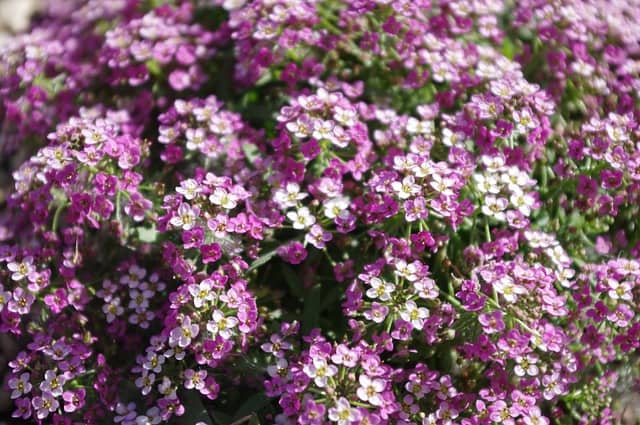
Sweet Alyssum is a charming annual flower that creates a delicate carpet of blooms to complement your rose garden. Coming in shades of white, purple, or pink, Alyssum has a wonderfully sweet fragrance, attracting beneficial insects and enhancing the sensory appeal of your garden. Its low-growing habit allows it to serve as an elegant filler between rose bushes, providing a lush underplanting effect. Sweet Alyssum also blooms profusely, making it an excellent choice for continuous color throughout the growing season. Moreover, this hardy flower thrives in sunny spots and well-drained soil, ensuring a perfect companionship with roses.
Hardy Geraniums
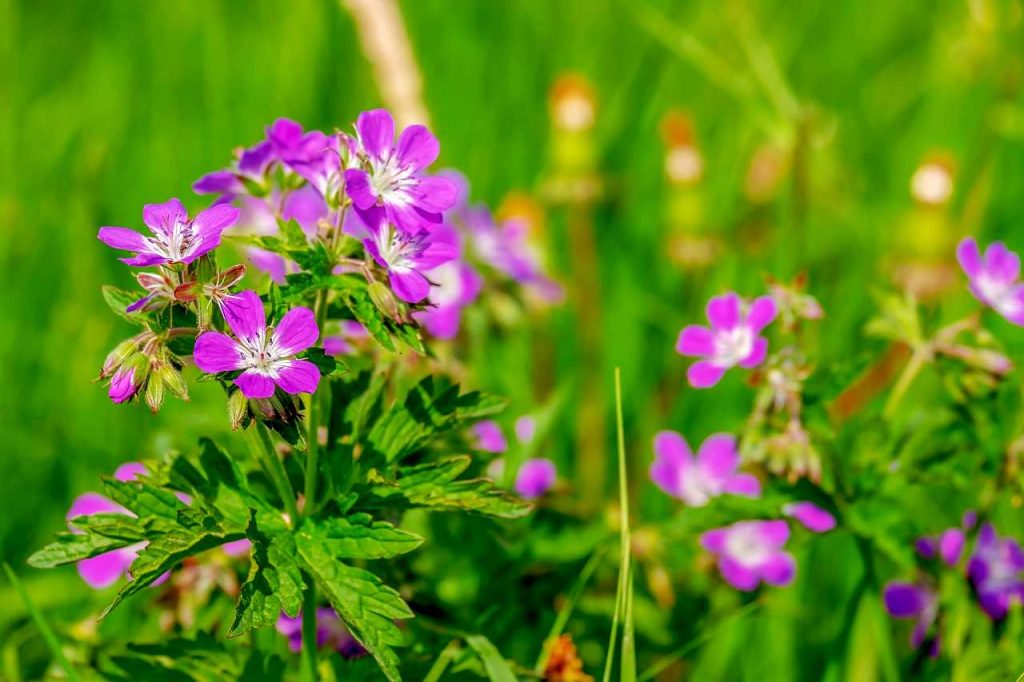
Hardy geraniums are a lovely choice to pair with roses as they bloom profusely in the spring and continue to add color throughout the summer. Their broad range of colors, including shades of blue, purple, pink, and white, creates a striking contrast with rose blooms. Hardy geraniums thrive in various soil types and adapt well to sun or partial shade, giving you versatility in planting alongside your roses. Their fine foliage helps to soften the overall appearance of the garden, while also preventing weeds and retaining soil moisture, making them a practical addition to your floral arrangements.
Penstemon
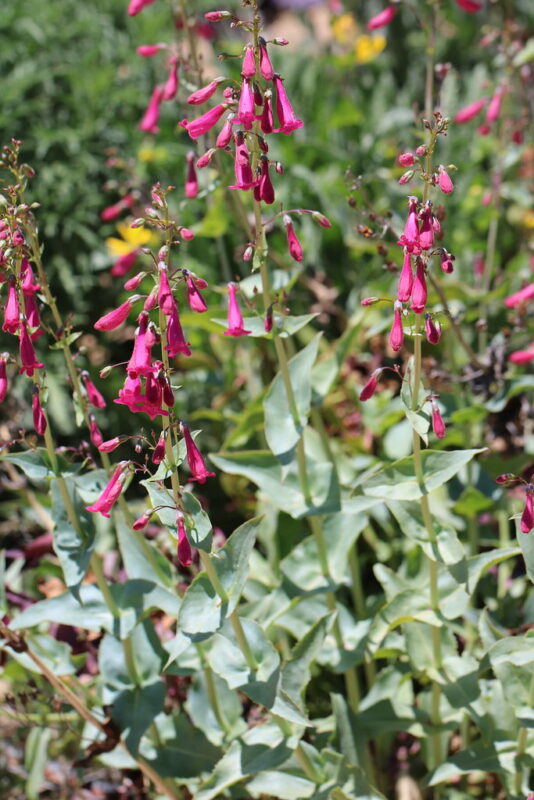
Penstemon brings a similar vertical elegance to the garden as Larkspur, with a slightly more understated charm. Their tubular flowers, ranging from pink to purple, bloom in late spring to early summer and attract a variety of pollinators, enhancing the vibrancy of your floral haven. These perennials are drought-tolerant once established and thrive in full sun, perfectly matching roses’ growing needs. Penstemon’s unique structure and form balance the rounded, full blooms of roses, making them an appealing and coherent part of your garden as they bloom simultaneously or with slightly overlapping schedules.
Phlox
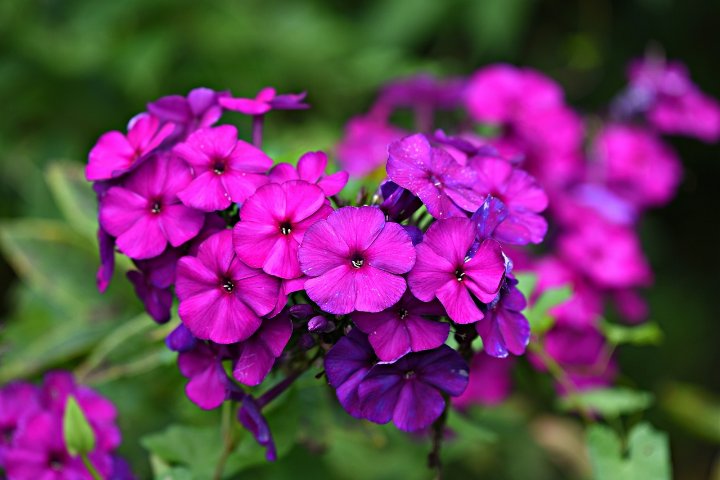
Phlox is a garden classic that adds fabulous color alongside roses. With varieties offering blooms in reds, pinks, blues, and whites, Phlox can serve as a vibrant companion plant, enhancing the aesthetic palette of your rose garden. Additionally, its lovely fragrance can complement the sweet notes of the rose blossoms. Phlox does well in rich, well-drained soil with plenty of sun, which is in line with rose requirements. As a bonus, their vast blooming season often stretches from mid-summer to fall, keeping your garden alive with color long after the roses have passed their prime.
Coneflower
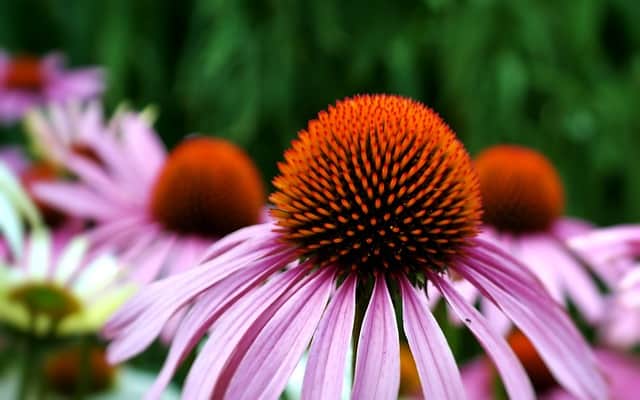
Coneflowers (Echinacea) are beloved for their resilience and striking appearance. They bring bold, daisy-like flowers in hues of purple, pink, and white that lend a warm, rustic charm to rose gardens. The prominent central cone surrounded by delicate petals provides a visually captivating contrast to the soft shape of roses, creating an engaging dynamic. Coneflowers also attract beneficial butterflies and bees, further enhancing the ecological richness of your garden. They thrive in sunny spots and are relatively drought-tolerant once established, making them a fitting, low-maintenance companion for any rose lover.
Sea Holly

Sea Holly (Eryngium) is a striking and somewhat unusual choice for planting with roses. Its architectural, spiky blooms of blue or purple add an unexpected twist to the softness of rose petals. Sea Holly thrives in dry, sandy soil and full sun, allowing for excellent drainage, which many roses appreciate. This plant has excellent drought tolerance once established, making it a resilient partner in the garden. Its unique shape and texture create valuable contrast next to the rounder forms of roses, making your garden visually intriguing while contributing to the overall health of the ecosystem.
Lavender
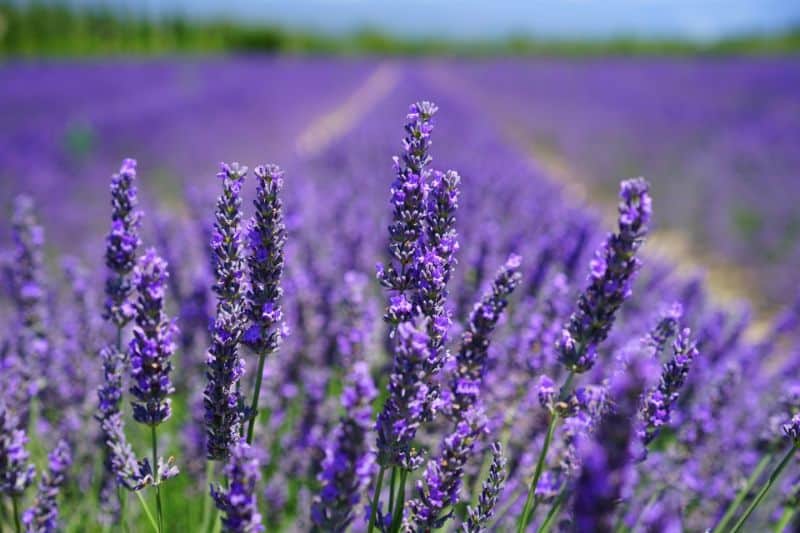
Lavender is not only fragrant and beautiful but also serves multiple purposes in your rose garden. This classic herb thrives in similar growing conditions as roses, preferring full sun and well-draining soil. The combination of purple lavender blooms and colorful roses can create a stunning color palette, while its aromatic qualities are known to deter pests such as aphids, which can harm roses. Additionally, lavender attracts a wide variety of pollinators, making it an excellent choice for increasing biodiversity in your garden. Its low and bushy habit serves as an effective ground cover and helps maintain soil moisture.
Lamb’s Ear
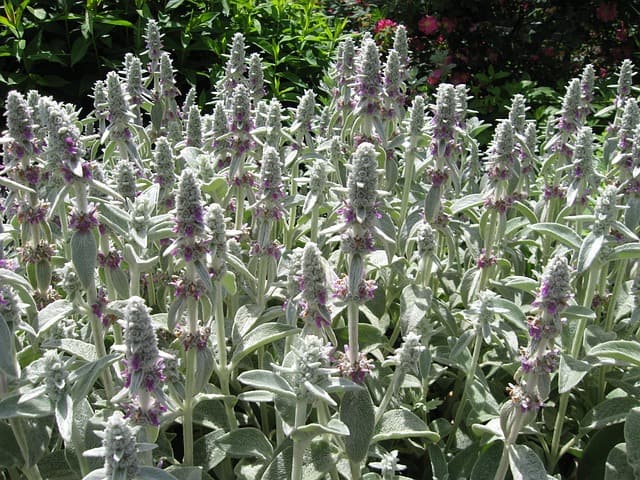
Lamb’s Ear (Stachys byzantina) provides both texture and a charming contrast to the delicate beauty of roses. Its silvery, soft foliage creates an enchanting backdrop and helps to retain soil moisture around the more demanding roses. This perennial thrives in sunny locations and is drought-tolerant once established. The lush, fuzzy leaves add depth to the garden, while springtime flowering spikes of pink or purple make for sweet accents among rose bushes. Lamb’s Ear is also a favorite for gardeners looking for low-maintenance companions, allowing you to focus more on nurturing your prized roses.
Violas
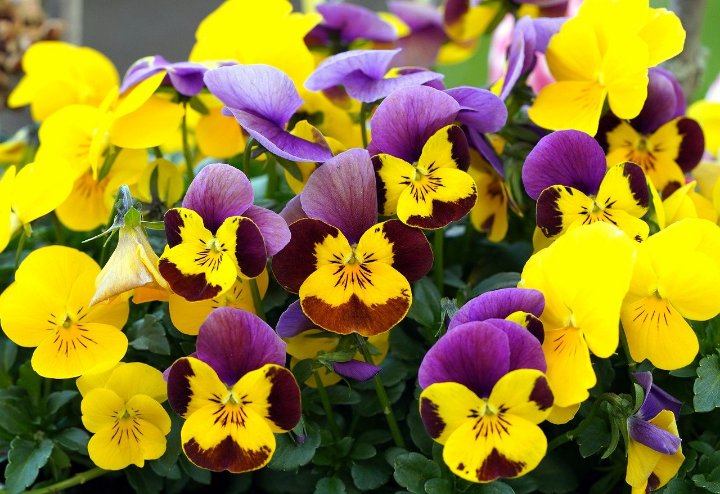
Violas are small but mighty companions for roses, offering a delightful array of colors and a sweet fragrance that can enhance the overall sensory experience in your garden. These annual or perennial plants thrive in cooler conditions and can provide early spring blooms that coexist beautifully with the later flowering of roses. The petite size of violas makes them an excellent choice for filling in gaps around rose beds without overwhelming them. Additionally, their hearty nature and long blooming period make them great additions to any garden, continuing to bloom even in less than perfect conditions.
Prairie Smoke
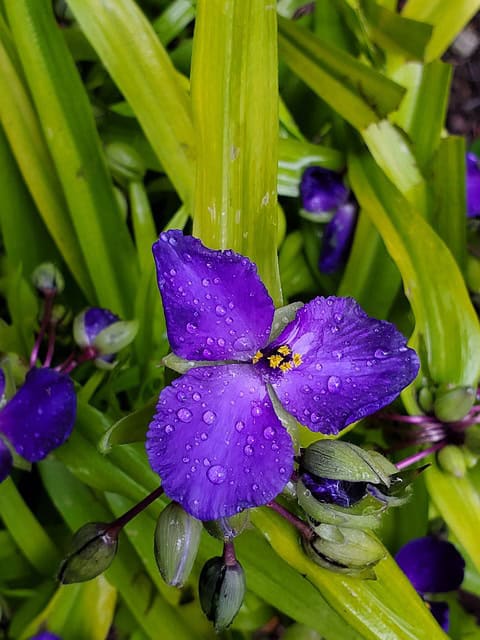
Prairie Smoke (Geum triflorum), with its unique, feathery seed heads, offers an intriguing visual contrast to traditional rose blooms. The plant’s early spring flowers are delicate and dainty, transitioning to fluffy seedheads that create texture and movement in your garden throughout the growing season. Thriving in well-drained soil and full sun, Prairie Smoke is a resilient perennial that can handle a variety of conditions. Its distinctive appearance will provide year-round interest even after roses have finished blooming, creating a visually layered garden design that keeps the eye traveling across the landscape.
Thyme
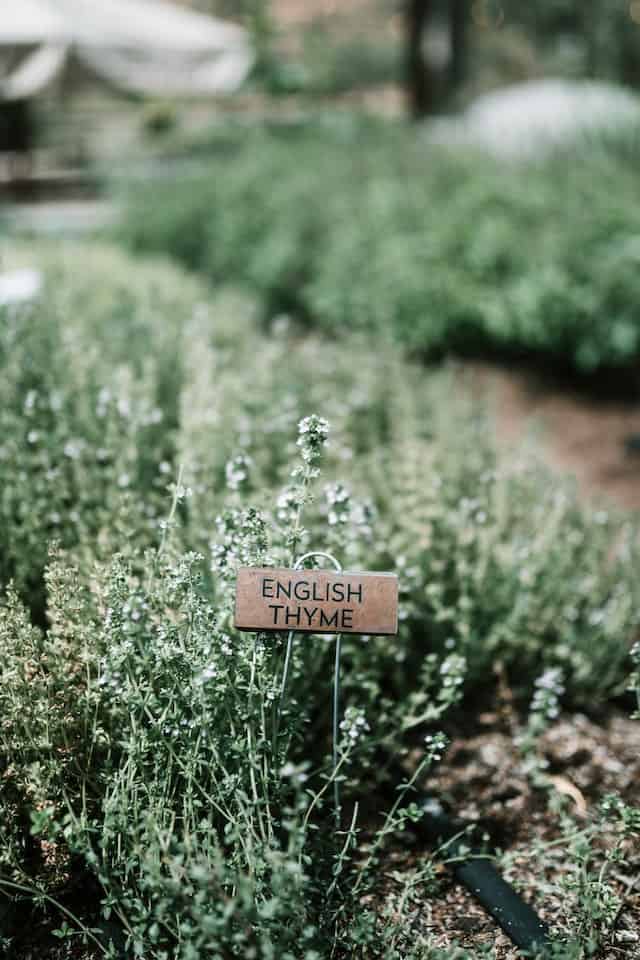
Thyme is a wonderful herb that offers both culinary uses and aesthetic appeal when planted alongside roses. Its compact growth habit and low stature make it an ideal ground cover, preventing weeds around the base of rose bushes while retaining soil moisture. The fragrant leaves and tiny purple flowers of thyme provide a charming contrast to the grandeur of roses. This hardy herb thrives in sunny locations and well-draining soil, perfectly matching the requirements for successful rose cultivation. Moreover, thyme is known to attract beneficial insects, contributing further to a robust garden environment.
Lady’s Mantle
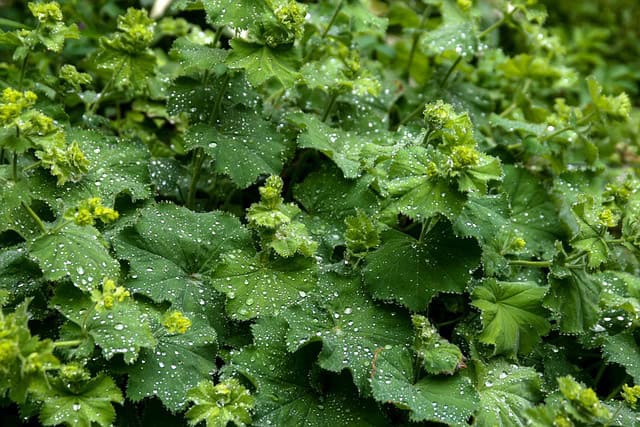
Lady’s Mantle (Alchemilla mollis) adds a beautiful touch of texture and visual interest with its soft, round leaves and delicate yellow-green flowers. This perennial thrives in partial shade and moist soil, which can be beneficial if your roses require a little extra water or if they are mulched to retain moisture. Lady’s Mantle also serves as a wonderful ground cover, helping to suppress weeds around your roses while offering a lush, green backdrop against your flowering shrubs. The often dew-laden leaves can create a picturesque scene, reflecting light and enhancing the beauty of your garden after rainfall.
Bachelor Buttons
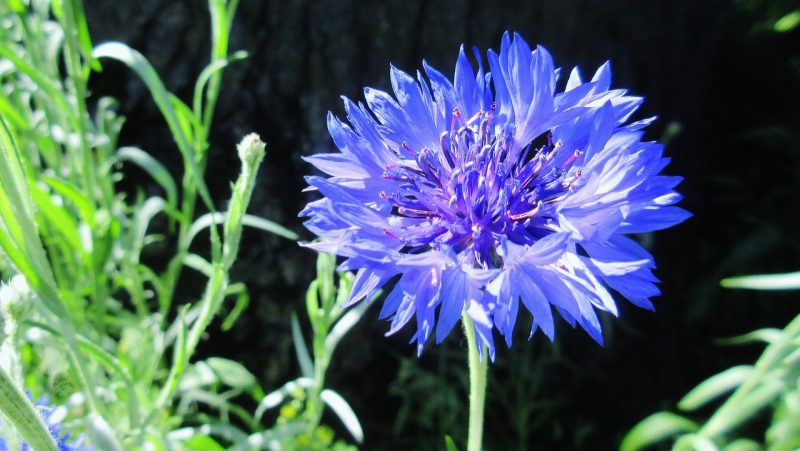
Bachelor Buttons (Centaurea cyanus), known for their bright blue, pink, and white flowers, add a whimsical touch to any rose garden. These annuals can be grown easily from seed and thrive in full sun, providing long-lasting color and delight throughout the growing season. Bachelor Buttons bloom concurrently with many rose varieties, creating a vibrant, lively palette within your garden. Serving as companions to roses, these flowers attract beneficial insects and help maintain healthy ecosystems in your garden. Their rugged nature makes them perfect for cutting gardens, as they can enhance floral arrangements just as beautifully as they elevate the garden landscape.
Black Eyed Susans
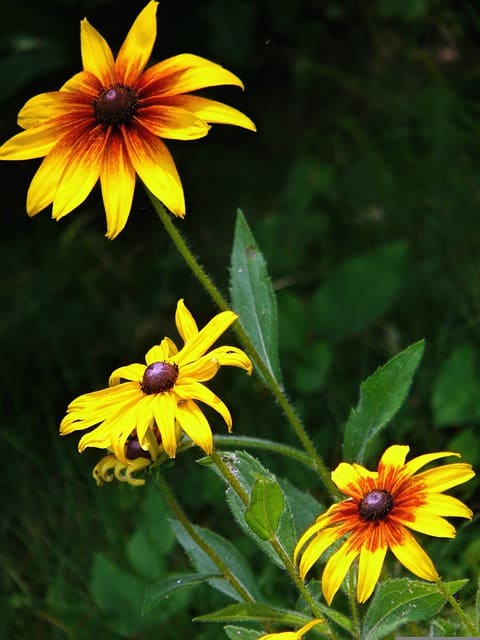
Black Eyed Susans (Rudbeckia hirta) are the quintessential summer flowers that can seamlessly complement the elegance of roses. Known for their cheerful yellow petals surrounding a dark brown cone, these perennials can create a warm contrast against the rich colors of rose blooms. Black Eyed Susans thrive in full sun and well-draining soil, sharing growing conditions with roses for optimal companionship. They bloom magnificently from late summer into fall, further enriching the seasonal display. Additionally, their robust nature attracts butterflies and birds, enhancing the dynamism of your garden setting.
Asters
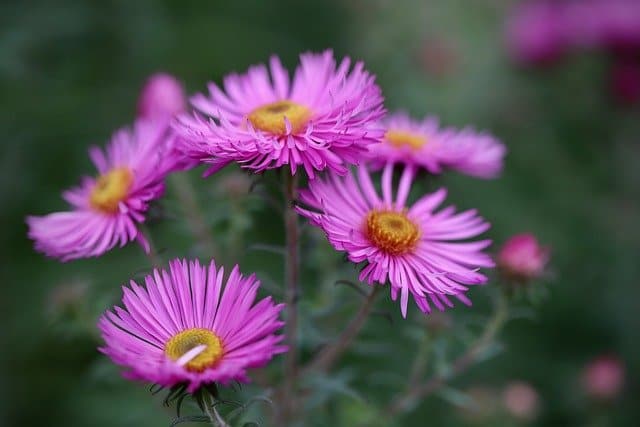
Asters are late-blooming perennials that can extend the flowering season of your rose garden into the fall. With their daisy-like flowers available in vibrant shades of blue, purple, and white, they make an excellent accompaniment, providing a stunning visual connection between your blooming roses and the transitions of the autumn season. Asters thrive in full sun and can handle various soil types, aligning perfectly with the growing requirements of roses. Their ability to attract pollinators also increases the biodiversity of your garden habitat. Planting Asters alongside roses ensures a graceful transition of color and vitality in your garden landscapes.
Pink Muhly Grass
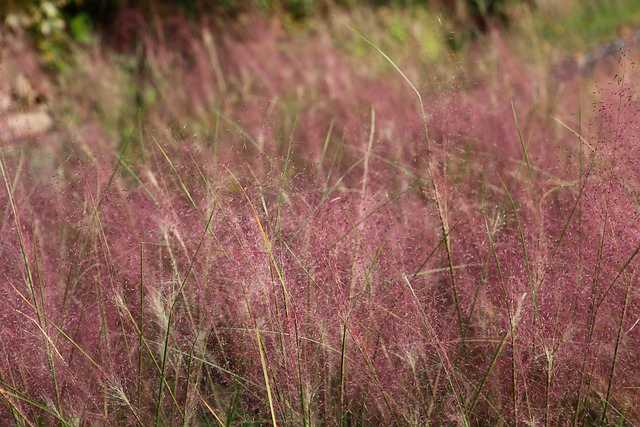
Pink Muhly Grass (Muhlenbergia capillaris) serves as an exceptional ornamental grass that adds texture and ethereal beauty to any rose garden. With its delicate, feathery pink plumes that appear in late summer and fall, this grass creates a stunning backdrop for blooming roses and draws the eye beautifully across the garden landscape. Pink Muhly Grass thrives in well-drained soil and full sun, making it an adaptable and resilient choice for sunny borders or mixed garden beds. Its graceful movement in the breeze adds an element of soft fluidity, creating an enchanting atmosphere that complements the striking forms of rose bushes.


